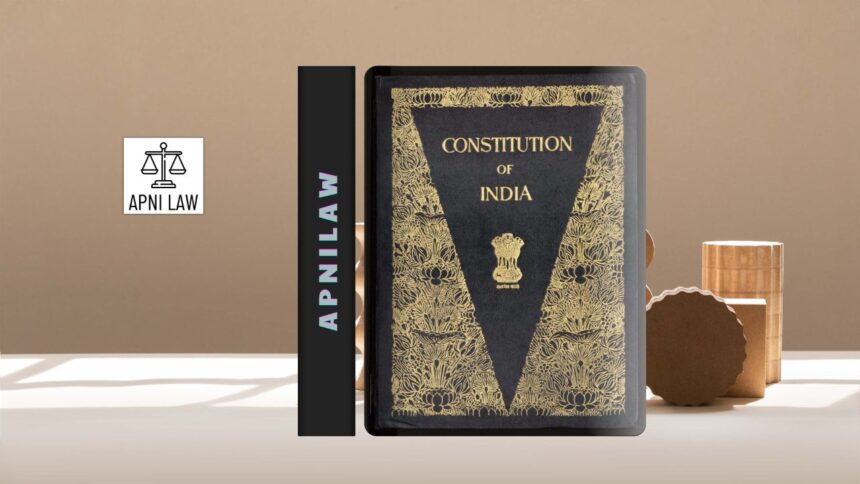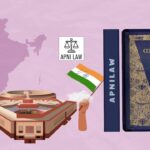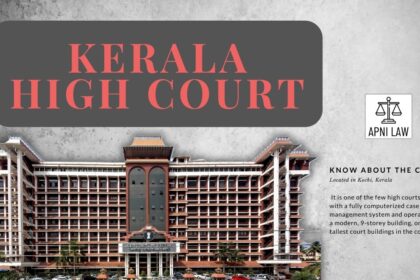Introduction
Article 239 of the Indian Constitution governs how Union Territories (UTs) are administered. It falls under Part VIII (Articles 239–242), which specifically deals with the governance of Union Territories. This article establishes that every Union Territory is administered by the President of India, either directly or through an administrator appointed by him. The provision ensures centralized control over regions that are not granted full statehood but still need structured governance under the Union Government.
What Does the Text of Article 239 Say?
Article 239 clearly states that every Union Territory shall be administered by the President, who may act through an administrator appointed with a designation of his choice. The administrator could be known as a Lieutenant Governor, Chief Commissioner, or Administrator, depending on the territory.
The second clause gives the President additional power to appoint a Governor of a State as the Administrator of an adjoining Union Territory. When a Governor holds such dual responsibility, he performs the role of Administrator independently of his State’s Council of Ministers.
Why Was Article 239 Introduced?
The need for Article 239 arose after India’s independence when several regions did not fit into the state structure. These regions were small, strategically significant, or required closer central supervision. The Seventh Amendment Act of 1956 reorganized the country’s administrative divisions by merging the earlier Part C and Part D states into what are now known as Union Territories. Article 239 became the constitutional foundation for their administration, ensuring they remained under the direct authority of the Union Government.
How Does the President Administer Union Territories?
Under Article 239, the President exercises direct control over the Union Territories. However, he generally functions through an appointed Administrator, who acts as his representative. The President may specify the designation, powers, and duties of the administrator as he considers appropriate.
In practice, the level of autonomy and governance structure in each Union Territory varies. Some UTs, such as Delhi and Puducherry, have been granted partial statehood with legislative assemblies, while others like Chandigarh and Lakshadweep are administered directly by the Centre through their administrators.
What Is the Role of Governors Under Clause (2)?
Clause (2) of Article 239 gives the President the discretion to appoint a Governor of a neighboring state as the Administrator of an adjoining Union Territory. This arrangement improves coordination between the state and the Union Territory, especially in regions with close geographical, economic, or cultural ties.
A practical example of this is the Governor of Punjab, who also serves as the Administrator of Chandigarh. However, when acting as the Administrator, the Governor operates independently from the State Government and its Council of Ministers. This ensures that the Union Territory’s administration remains under the Union’s authority and is not influenced by state politics.
How Does Article 239 Relate to Other Constitutional Provisions?
Article 239 serves as the parent provision for all Union Territories. The articles that follow it, such as Articles 239A and 239AA, create special arrangements for certain UTs that have unique administrative or political needs.
Article 239A allows Parliament to create a legislature or Council of Ministers for specific Union Territories. This provision was used to grant Puducherry limited self-governing powers.
Article 239AA, introduced through the 69th Constitutional Amendment Act, 1991, provides special provisions for the National Capital Territory of Delhi. It established a legislative assembly and a council of ministers for Delhi, while retaining the Lieutenant Governor as the President’s representative.
What Have the Courts Said About Article 239?
Indian courts have played a crucial role in interpreting the scope of Article 239 and defining the powers of administrators and Union Territories.
In G. K. Sinha v. Union of India (1970), the Supreme Court held that the President’s discretion to appoint administrators is absolute and cannot be questioned.
In K. K. Verma v. Union of India (1975), the Court reiterated that administrators are directly accountable to the President, not to any legislative body within the Union Territory.
One of the most significant judgments was State (NCT of Delhi) v. Union of India (2018). The Supreme Court clarified that while Delhi’s Lieutenant Governor is the President’s representative, he must work harmoniously with the elected government. The Court emphasized the principle of collaborative federalism, stating that the Lieutenant Governor should act based on the advice of the Council of Ministers except in exceptional situations where national interest is at stake.
Why Is Article 239 Important for India’s Governance?
Article 239 plays a vital role in maintaining administrative balance within India’s federal framework. It allows the Union Government to retain direct control over strategically important or small territories while ensuring that some UTs enjoy limited self-rule.
This structure benefits India in several ways. It helps maintain national security in border territories such as Andaman and Nicobar Islands and Ladakh, ensures effective governance in small regions, and allows flexibility in granting legislative powers to certain UTs.
How Does Article 239 Maintain Central Control?
The central idea behind Article 239 is centralized administration. Unlike states that have constitutional independence in their governance, Union Territories function directly under the control of the Union. The administrators appointed under Article 239 represent the President and ensure that central policies are implemented uniformly.
This system also provides administrative flexibility. Parliament has the power to alter the structure, powers, and governance pattern of any UT depending on political, demographic, or strategic considerations.
What Are Some Examples of Article 239 in Action?
Several Union Territories operate under the framework of Article 239. Chandigarh, Dadra and Nagar Haveli and Daman and Diu, Lakshadweep, and Andaman and Nicobar Islands are administered directly by administrators appointed by the President.
Puducherry and Delhi, though Union Territories, have legislative assemblies created under Articles 239A and 239AA. Their unique governance models combine both local self-government and central oversight, but the President retains the final authority through the Lieutenant Governor.
What Are the Takeaways from Article 239?
Article 239 establishes a non-federal, flexible administrative model that ensures the Union Government can effectively govern territories that may not be suitable for full statehood. It reinforces the concept that Union Territories are extensions of the Union and not separate constitutional entities like states.
The President, acting through appointed administrators, ensures consistency in governance, national unity, and policy implementation across all territories. While Delhi and Puducherry have legislative powers, the ultimate control still rests with the Centre.
What Is the Broader Constitutional Context?
Article 239 must be read alongside Articles 239A and 239AA to understand the complete framework for Union Territories. Together, these provisions create a balance between local autonomy and central authority. They provide flexibility to adapt the administrative system based on each territory’s unique needs.
The Union Government’s control over these territories also reflects India’s quasi-federal nature, where certain regions are directly managed by the Centre for administrative efficiency, security, or national interest.
For any specific query call at +91 – 8569843472
Conclusion
Article 239 of the Indian Constitution is the cornerstone of Union Territory administration. It vests executive authority in the President and ensures that the Union maintains direct supervision over territories that are not full-fledged states. By empowering the President to appoint administrators and even Governors as administrators of nearby UTs, it allows a flexible and efficient governance system.
The judicial interpretations of Article 239 have further refined its application, ensuring that while the Centre retains control, the principles of cooperative governance and accountability are maintained. In essence, Article 239 represents India’s effort to balance central authority with local governance, making it a crucial pillar in the country’s administrative and constitutional structure.








